Master Linji, better known in the West as Rinzai, shook up the Buddhist world by telling his students to drop their enlightenment agenda and simply be their true, ordinary selves. Thich Nhat Hanh examines Master Linji’s teachings on the “businessless person,” who has nothing to do and nowhere to go.
Many students of Buddhism are the children of Master Linji, even if they don’t know his name. In the Zen tradition, the spirit of Master Linji is in everything we’re taught and everything we do.
Master Linji lived during the Tang Dynasty in China. He was born in western Shandong province, just south of the Huang Ho (Yellow) River, sometime between 810 and 815.When he was still young, he left his family and traveled north to study with Zen patriarch Huangbo in his monastery near Hongzhou in Jiangxi province, just south of the Yangzi River. It was a time of political instability in China. There was government repression of Buddhism, which culminated in a decree, issued in 845 by the emperor Tang Wu Zong, ordering all monks and nuns to disrobe and return to lay life. Many temples and statues were destroyed, particularly in the cities. Monasteries in outlying areas were less affected.
After several years, the young Linji was sent by his teacher to study briefly with the reclusive monk Dayu, after which time he returned to live with the monks at Patriarch Huangbo’s temple. Later he had his own temple in Zhengzhou, Hebei province, where he taught in his signature direct and dramatic style. As was the custom in China at the time, he took his name, Linji, from the name of the mountain on which he lived and taught. He resided there until he passed away in 867. He never wrote down his teachings, but his students recorded and compiled them in The Record of Master Linji (known in the Japanese Zen tradition as The Book of Rinzai).
As a young monk, Linji studied diligently and gained a deep and extensive knowledge of the Tripitaka, the three baskets of the Buddhist teachings: the sutras, commentaries, and vinaya (monastic precepts). He noticed that although many monks studied very diligently, their studies didn’t influence their understanding and transformation. They appeared to be seeking knowledge only to increase their fame or position in the temple. So Master Linji let go of his studies in order to follow true Zen practice.
Many of us have spent our whole lives learning, questioning, and searching. But even on the path of enlightenment, if all we do is study, we’re wasting our time and that of our teacher. This doesn’t mean we shouldn’t study; study and practice help each other. But what’s important is not the goal we’re seeking—even if that goal is enlightenment—but living each moment of our daily life truly and fully.
Master Linji had a solid knowledge of the Buddhist canon, but his teaching method was based on his confidence that human beings need only to wake up to their true nature and live as ordinary people. Master Linji didn’t call himself a Zen master. He called himself a “good spiritual friend,” someone who could help others on the path. Master Linji called those who had insight to teach “the host,” and the student, the one who comes to learn, “the guest.”
In Master Linji’s time, some Buddhist terms were used so often they became meaningless. People chewed on words like “liberation” and “enlightenment” until they lost their power. It’s no different today. People use words that tire our ears. We hear the words “freedom” and “security” on talk radio, television, and in the newspaper so often that they’ve lost their effectiveness. Even the most beautiful words can lose their true meaning when they’re overused. For example, the word “love” is a wonderful word. When we like to eat hamburger, we say, “I love hamburger.” So what’s left of the deeper meaning of the word “love”?
It’s the same with Buddhist words. Someone may be able to speak beautifully about compassion, wisdom, or nonself, but this doesn’t necessarily help others. And the speaker may still have a big self or treat others badly; his eloquent speech may be only empty words. We can get tired of all these words, even the word “Buddha.” So to wake people up, Master Linji invented new terms and new ways of saying things that would respond to the needs of his time.
For example, Master Linji invented the term the “businessless person,”
1 the person who has nothing to do and nowhere to go. This was his ideal example of what a person could be. In Theravada Buddhism, the ideal person was the arhat, someone who practiced to attain enlightenment. In Mahayana Buddhism, the ideal person was the bodhisattva, a compassionate being who, on the path of enlightenment, helped others.
According to Master Linji, the businessless person is someone who doesn’t run after enlightenment or grasp at anything, even if that thing is the Buddha. This person has simply stopped. She is no longer caught by anything, even theories or teachings. The businessless person is the true person inside each one of us. This is the essential teaching of Master Linji.
When we learn to stop and be truly alive in the present moment, we are in touch with what’s going on within and around us. We aren’t carried away by the past, the future, our thinking, ideas, emotions, and projects. Often we think that our ideas about things are the reality of that thing. But even our notion of the Buddha may be just an idea and far from reality. The Buddha outside ourselves was a human being who was born, lived, and died. For us to seek such a Buddha would be to seek a shadow, a ghost Buddha, and at some point our idea of Buddha would become an obstacle for us.
Master Linji said that when we meet the ghost Buddha, we should cut off his head. Whether we’re looking inside or outside ourselves, we need to cut off the head of whatever we meet, and abandon the views and ideas we have about things, including our ideas about Buddhism and Buddhist teachings. Buddhist teachings are not exalted words and scriptures existing outside us, sitting on a high shelf in the temple, but rather they are medicine for our ills. Buddhist teachings are skillful means to cure our ignorance, craving, anger, as well as our habit of seeking things outside and not having confidence in ourselves.
Insight can’t be found in sutras, commentaries, or dharma talks. Liberation and awakened understanding can’t be found by devoting ourselves to the study of the Buddhist scriptures. This is like hoping to find fresh water in dry bones. Returning to the present moment, using our clear mind which exists right here and now, we can be in touch with liberation and enlightenment, as well as with the Buddha and all his disciples as living realities right in this moment.
The person who has nothing to do is sovereign over herself. She doesn’t need to put on airs or leave any trace behind. The true person is an active participant, engaged in her environment while remaining unoppressed by it. Although all phenomena are going through the various appearances of birth, abiding, changing, and dying, the true person doesn’t become a victim of sadness, happiness, love, or hate. She lives in awareness as an ordinary person, whether standing, walking, lying down, or sitting. She doesn’t act a part, even the part of a great Zen master. This is what Master Linji means by “Be sovereign wherever you are and use that place as your seat of awakening.”
We may wonder, “If a person has no direction, isn’t yearning to realize an ideal, and doesn’t have an aim in life, then who will help living beings be liberated? Who will rescue those who are drowning in the ocean of suffering?” A buddha is a person who has no more business to do and isn’t looking for anything. In doing nothing, in simply stopping, we can live freely and true to ourselves and our liberation will contribute to the liberation of all beings.
Master Linji’s Medicine
Master Linji taught in order to shake things up. He wanted to smash obstacles, heal sickness, and undo fetters. Reading his words is like taking a very strong medicine. Most of us tend to think that if we take vitamins or tonics, we’ll feel healthier. But sometimes, rather than taking anything more into our bodies, we need to clean them out. That’s when we need a good dose of the teachings of Master Linji. They aren’t vitamins, they’re laxatives.
When we’ve accumulated so much knowledge inside, we don’t have the capacity to digest it. It’s like when we eat too much food, we can’t digest it and we become constipated. When we don’t understand what we’ve learned and can’t apply it in our practice, in our daily life, then our knowledge can block our bodies and minds. But you don’t have to wait until you’re constipated to benefit from Master Linji’s teachings; prevention is better than cure.
Master Linji didn’t want to present deep and wonderful ideas for us to study and debate. We don’t come to the teachings of Master Linji looking for some absolute truth or hoping to discover difficult concepts and mystical ideas. All teaching devices are first and foremost words, mere designations. Master Linji calls them “empty terms” or “-isms.” They aren’t objective realities. Master Linji doesn’t want us to see his words as a golden framework or jade ruler to study and worship. He tells us his words are only drawings made in empty space.
The purpose of Master Linji’s work is to help us cease all our seeking and come back to ourselves in the present moment. That’s where we can find everything we’re looking for, whether it’s Buddha, perfect understanding, peace, or liberation.
The Record of Master Linji is divided into two parts: Zen battles and evening talks. The teachings that Master Linji gave in the morning, the Zen battles, were given in the form of questions and answers, which often read like riddles. In the afternoon or evening, he would give explanation teachings, sharing the dharma and telling stories. These talks give principal ideas that can guide your practice and also help you better understand the Zen battles.
The Zen battles are skits. One role is the teacher, the “host.” The other role is the student, the “guest.” The host is the one who knows what’s going on and the guest is the one who comes to learn. Sometimes they switch roles: the guest plays the role of the host, and the host plays the role of the guest. Sometimes both play the guest or the host.
In the time of Master Linji, a Zen student would step up and face the Zen master in order to ask a question and to find out from the master if his understanding was ripe yet. This required a certain bravery on the part of the student. Sometimes there would be victory, sometimes defeat. Sometimes the battles would lead to destruction. Sometimes both guest and host would be victorious.
Master Linji wasn’t trying to defeat his students in these battles; he was trying to defeat their tendency to engage in excessive thinking and rationalizing. For Master Linji, thinking was not awakened understanding. So these weren’t long battles. The Zen master didn’t need to sit and talk for a long time. The student had to say only one thing and the Zen master would know his mind. The student needed to give rise to only one thought to go in the wrong direction. Whether or not he understood would be determined in that very instant. If he went in the wrong direction and then made an effort, he would lose.
In school, when we want to ask a question, we remain seated and put up our hand. We use our head, our intellect, to ask a question in order to get a bit of knowledge in return. But Zen isn’t like that. Here our aim isn’t to find out and store up knowledge about Buddhism; it’s to ask the right question, the question that has the capacity to destroy our obstacles. If we don’t have that question, it’s better not to come forward. Our question should be something that can tear apart the veil of ignorance and liberate us. Maybe it can teach our teacher and the whole community, too. This is what Master Linji is looking for when he asks, “Is there any warrior who is willing to step out onto the battlefield?”
Dharma Battle: Where does the weakness lie?
The master (Linji) had just come into the dharma hall and a monk came out and prostrated. The master yelled. The monk said, “Please, Upadhyaya,
2 do not test me.” The master asked, “Tell me, monk, where did the sound of that shout fall?” The monk shouted forthwith.
Another monk came up and asked, “What is the essential teaching of the buddhadharma?” The master yelled. The monk prostrated. The master asked, “Where does the weakness lie?” The monk said, “If one offends again, it will not be forgiven.” The master immediately shouted.
That day, as soon as the masters of the two meditation halls saw each other, they shouted at the same time. A monk asked the master, “In this case, is there a proper guest and host?” The master said, “The guest and the host are clear.” And then he added, “Noble Sangha, if you want to know the principle of the four relations of guest and host, then go and ask the two masters of the meditation halls.” Having spoken, he stepped down.
The Zen master came into the dharma hall and a monk asked, “What is the main idea of the buddhadharma?” The master raised his duster. The monk shouted and was beaten once by the master.
Commentary
Master Linji ascended the dharma seat and a monk came up and prostrated and didn’t ask anything. Maybe he had a question, maybe not. But something motivated him to step out. In response, the Zen master shouted, confronting the monk to see what was in his mind. Perhaps the monk went up there just to be seen but had no special question. Perhaps Master Linji’s shout made the monk consider his motivation. Perhaps it confused him; he hadn’t said anything and yet he had been shouted at. So he said, “Please, Upadhyaya, don’t test me.” Maybe he didn’t feel he had enough strength to deal with the spiritual power of the master.
The Zen master asked, “Tell me, monk, where did the sound of that shout fall?” That is, what effect did it have? And the monk shouted back. He was in the position of a guest, a learner, and he roared back to play the role of a host.
Another monk came up and asked, “What is the essential teaching of the buddhadharma?” When we have an opportunity to ask the Zen master a question and we don’t know what question to ask, then we can ask that question. It may not be the question that’s important, but the chance to be in contact with our teacher so that our teacher can look into our mind and shine light into our mind to help us to see the path more clearly.
A similar question commonly asked of a Zen master is: What was Bodhidharma’s intention in coming to China from India? Recently, I proposed an answer: “Mind your own business!” What does the purpose of the Master coming to China from India have to do with you? Why don’t you do walking meditation; why don’t you breathe? “Mind your own business” would be an economical answer. It saves us a lot of time.
The Zen master’s shout was also an economical answer. Perhaps his shout meant, “Why do you ask that question; what good does it do you?” Perhaps that shout helped the student see the moment of being in contact with the teacher as a valuable opportunity not to be wasted by asking about external knowledge. Why not go on the path of direct experience?
The monk prostrated. That prostration may have meant he understood, but it may not have. So the Zen master asked, “Where does the weakness lie?” meaning,“ Why did I shout at you? Can you tell me?” And the monk replied, “If one offends again, it will not be forgiven,” meaning he wouldn’t ask such a useless question the next time. The Zen master shouts again. The monk is focused already on “the next time” and is not in the present moment.
Then a monk came to the Zen master and told him that when the two head monks of the meditation halls in the east and west met, they shouted simultaneously. He asked the master, “In this case, is there a proper guest and host?” The Zen master said, “The guest and host are clear. Great Community, if you want to know about the principle of the four relations of guest and host, then go and ask the two masters of the meditation halls.” Having spoken, he stepped down.
Traditionally, the west hall was for the monks and the east hall was for guests. The master said to go ask the monks involved because they would know firsthand. The four situations of guest and host, the four ways of interaction, are methods of helping others in the tradition of Master Linji. The host knows what’s going on and the guest comes to learn. And there are times when the guest plays the role of a host and the host plays the role of the guest. In this example, where both monks yelled at the same time, who was the host and who was the guest? Perhaps, in that moment, both were either host or guest, or host and guest. According to the method of Master Linji, we have to distinguish who’s the host and who’s the guest. In all these Zen dialogues, we need to know who is who.
In the final part of the teaching, the Zen master went to the dharma hall where a monk asked, “What is the main idea of the buddhadharma?” The Zen master waved his duster. The monk shouted and the Zen master hit him. Raising the duster was the Zen master’s first answer, which the questioner responded to by shouting. The blow was the master’s second and final answer.
Evening Talk: Distinguishing Buddha from Mara
The master (Linji) gave an opening talk:
“My friends, in the practice of the buddhadharma there is no need for hard work. The principle is not to try to be anyone special, and to have nothing to do. If you put on your robe, eat your meal, urinate, defecate, and rest when you are tired, the foolish ones will laugh, but the wise ones will understand. The teachers of old say, ‘If you direct your practice to the outer form, you are just a group of foolish people.’ You should be sovereign according to where you find yourself; be the true person wherever you are, not allowing the conditions around you to pull you away. Thus, even if your habit energies have been built up over one thousand years, or you have committed the five inexpiable crimes, they all will become the ocean of liberation.
“Most of those who study the path of Buddhism in our own time do not understand the dharma. They are like goats who will eat whatever is given them; they cannot distinguish master from servant, guest from host. People like that enter on the path of practice with the wrong motivation; they are always ready to enter places of noise and disturbance. You cannot call them true monks. In fact they are worldly people. True monks must have right view in their daily life, which is able to distinguish Buddha from Mara, true from false, sacred from profane. Only when people have this ability can they be called true renouncers of the household life. If they cannot distinguish Mara from Buddha, they just renounce one household in order to enter another. They can be called living beings who are making karma but not those who have renounced the household. In our own time there is a phenomenon called Buddha-Mara, an entity in which Mara and Buddha cannot be distinguished, like when milk and water are mixed together. It is said that from such a mixture the King of Geese can drink just the milk. My dharma friends with good eyes, according to me, should topple both Buddha and Mara. If they still have the tendency to love the sacred and hate the profane, they will continue to drown in the ocean of birth and death for a long time.”
Commentary
Buddhism should not be hard work. If we do sitting or walking meditation and we exert too much effort, that isn’t the buddhadharma. If, while we’re eating, we try not to speak and we try to pick up food in a very correct way with the spoon, then we’re working too hard. We should still practice mindful manners. Master Linji isn’t saying we should be unmindful, just that we should live our lives with as much relaxation as possible.
If we want to put on the robe, then we put on the robe. If we want to eat our meals, then we eat our meals. If we want to defecate, then we defecate. If we want to urinate, then we can urinate. If we’re tired, then we can rest. We don’t need to listen to the dharma talk. We don’t need to go to a dharma discussion. Master Linji referred to a poem written by Puji, a student of the seventh patriarch of the Northern school of Zen Buddhism, that reads: “If we direct ourselves outward for our daily practice, then we’re all ignorant. The ignorant can laugh at me. But the one with insight, with understanding, will understand me.”
Wherever we go, we can be the master of our situation. Suppose an older sister or brother is bothering us. We may be tempted to think it’s their fault that we suffer. But we can instead take the initiative and decide that we can help our sibling and ourselves. “You should be sovereign according to where you find yourself; be the true person wherever you are, not allowing the conditions to pull you away.” Wherever we are, our true self is present. We don’t stand before a crowd pretending to be dignified and then when we’re alone we become forgetful. Rather, whether we’re alone or with others, we’re still our true selves. Whether we’re defecating or giving a dharma talk, we’re the same person.
I knew a Thai practitioner who had lost respect for her teacher. When asked why, she told a story about how one day her teacher, after looking around and thinking no one was looking, kicked a dog. Often he was very compassionate, but that day, for whatever reason, he kicked the dog and his student saw this. Perhaps he had something irritating on his mind and therefore he kicked the dog. But the thing that upset the student the most was how, before he kicked the dog, he looked around to see if anybody was watching.
If we can be our true selves, then even if in this or a past life we committed one of the five offenses that cause eternal hell—killing father, killing mother, killing an arhat, causing a Buddha to bleed, and causing the sangha to be divided—we will still be liberated.
The master taught, “Most of those who study the path of Buddhism in our own time do not understand the dharma. They are like goats who will eat whatever is given them; they cannot distinguish master from servant, guest from host. People like that enter on the path of practice with the wrong motivation; they are always ready to enter places of noise and disturbance. True monks must have right view in their daily life, which is able to distinguish Buddha from Mara, true from false, sacred from profane. Only when people have this ability can they be called true renouncers of the household life. If they cannot distinguish Mara from Buddha, they just renounce one household in order to enter another. They can be called living beings who are making karma but not those who have renounced the household. In our own time there is a phenomenon called Buddha-Mara, an entity in which Mara and Buddha cannot be distinguished, like when milk and water are mixed together. It is said that from such a mixture the King of Geese can drink just the milk. My dharma friends with good eyes, according to me, should topple both Buddha and Mara. If they still have the tendency to love the sacred and hate the profane, they will continue to drown in the ocean of birth and death for a long time.”
Some Buddhist seekers are like the goat who will eat whatever it comes across. The goat will eat whatever its mouth touches. We study Japanese Zen, we study Tibetan Buddhism, we study the southern transmission, the northern transmission, we study mindfulness, we study Vipassana. We will chew whatever we come across; we have no discernment.
Master Linji is referring to a Mahayana story in which even when milk and water had been mixed together, the King of Geese could drink milk and leave the water, even though the two seemed to have become indistinguishable from each other, just like Buddha and Mara. Garbage and flowers depend on each other to grow. Night and day depend on each other to establish themselves. This is the wisdom of nondiscrimination.
Back to Bright Shining Mind
Master Linji taught that each one of us has a bright and shining mind. If we can find our way back to that bright mind, then we can be as the Buddha and the bodhisattvas are. When our shining mind is dulled, that means it’s covered by afflictions. With the practice of mindfulness, we can restore our bright mind. Our mind is a garden, and our garden has been ignored for a long time. The soil is hard, and brambles and wild grasses are growing everywhere. To practice is to come back and care for our garden. We are the gardener, our mind is the earth, and in the soil there are good seeds.
Please write these eight words and hang them somewhere you will see them: “Wherever you are, you are your true person.” You can write them on a small piece of paper, the size of a credit card, that you put in your wallet to take out as a reminder. If you can practice these eight words, you are worthy of being Master Linji’s student and his continuation. Master Linji taught us that we have to use our bright shining mind to come back to the present moment and enter the world of the ultimate, the realm of the Buddha, the Pure Land. With mindful breathing, mindful walking, and gathas (Zen poems that we can memorize and recite silently) to help us come back to our true self, we can be the businessless person with nothing to do but hold the hand of the Buddha and roam.
1 Eido Shimano Roshi translates this as the “true man without rank.”

2 Upadhyaya means “teacher” in Sanskrit. The upadhyaya is traditionally responsible for training students in the rites, rules, and discipline of a monastic community.












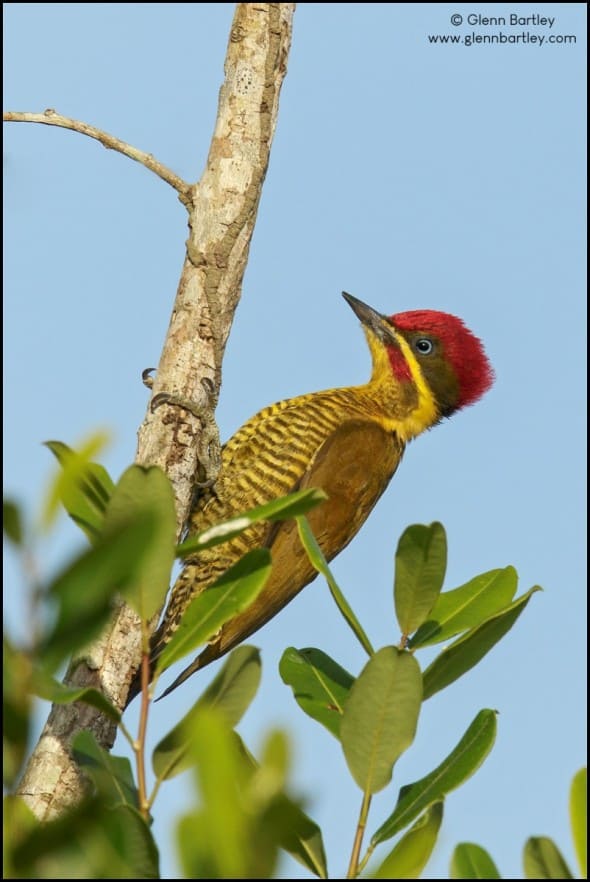


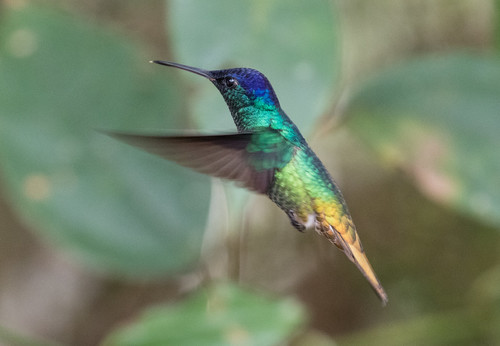
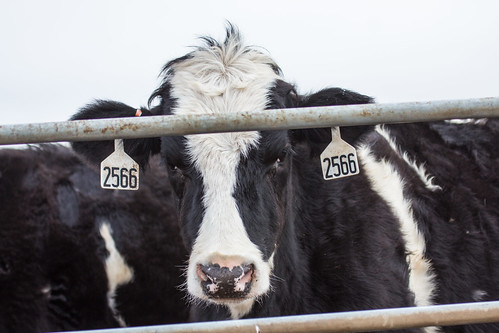

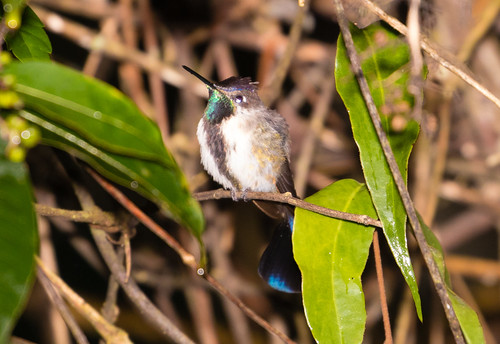
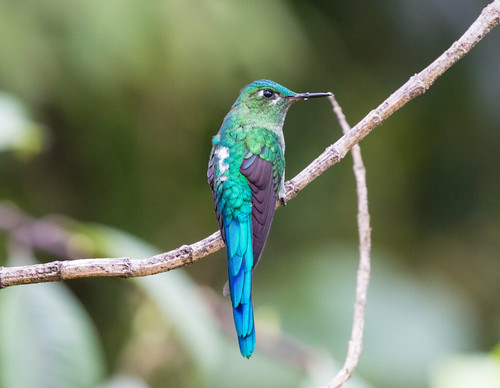
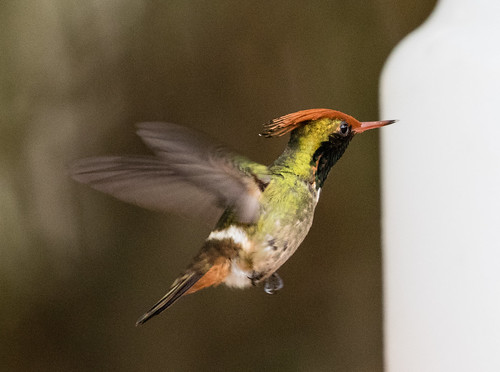
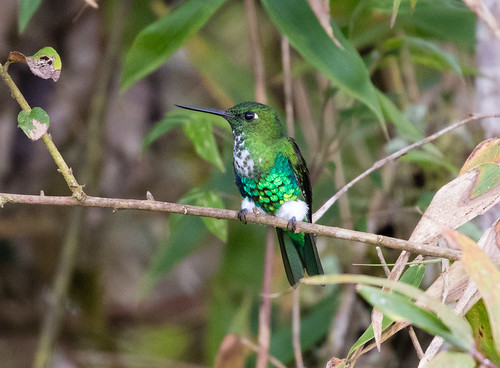

 Photo by
Photo by 




